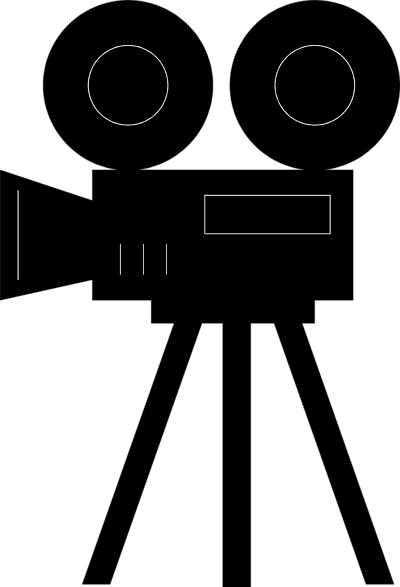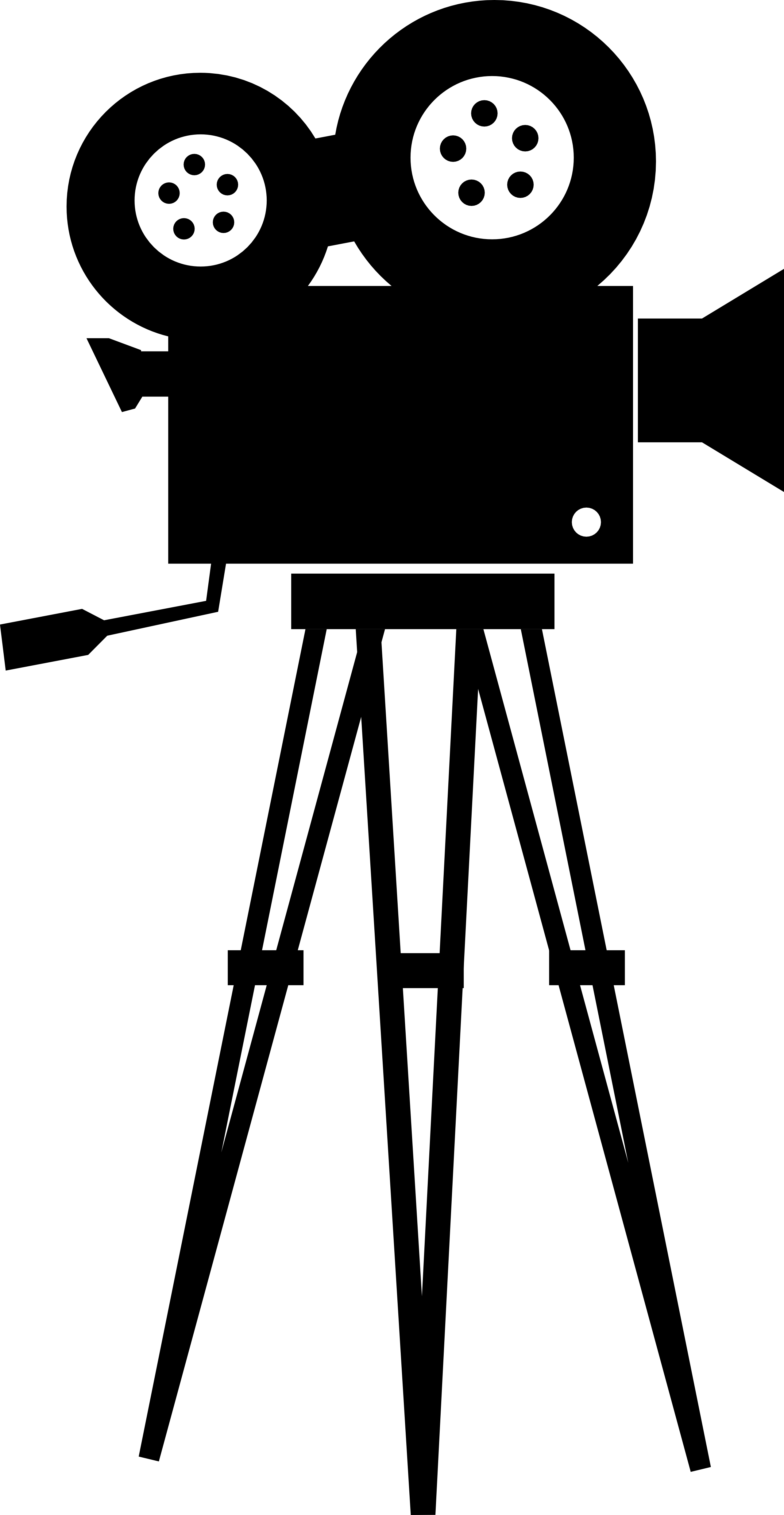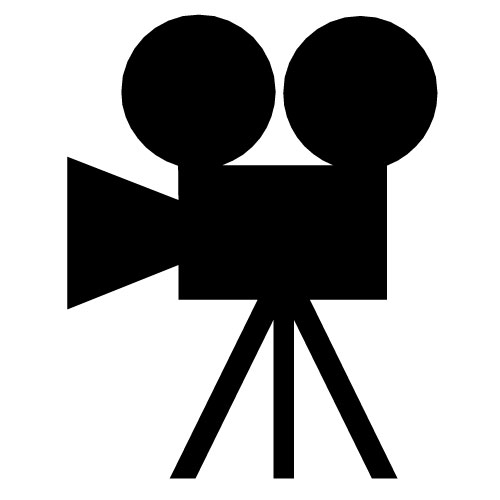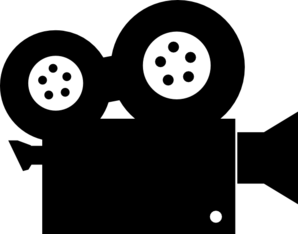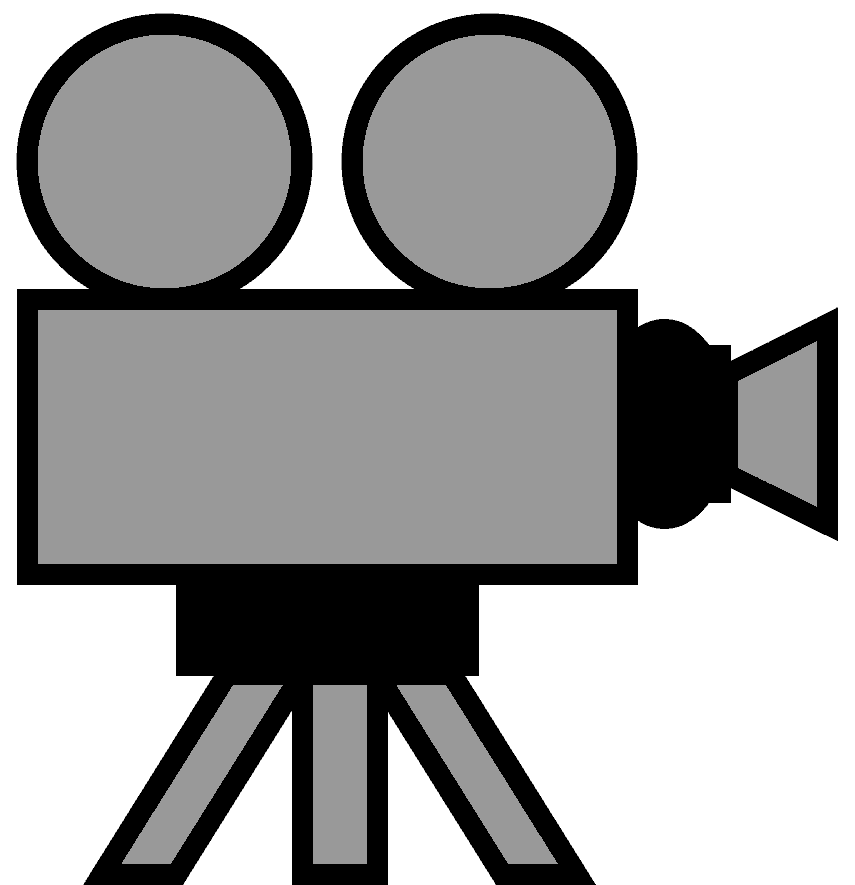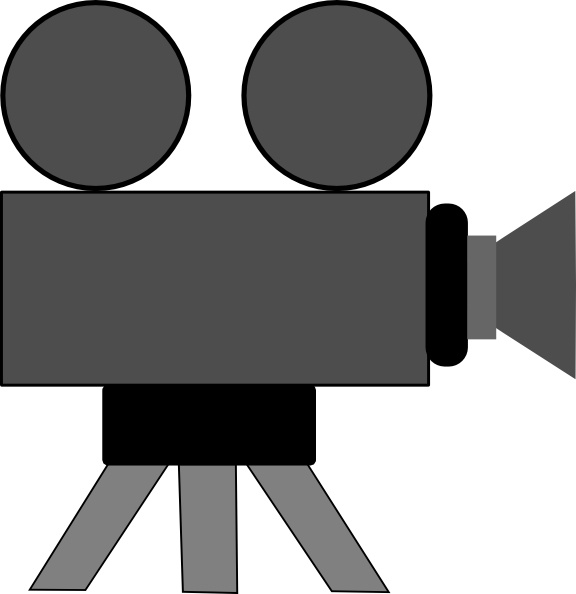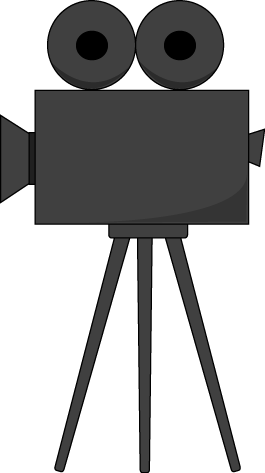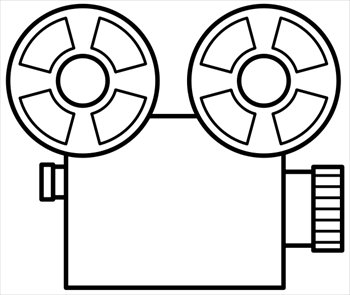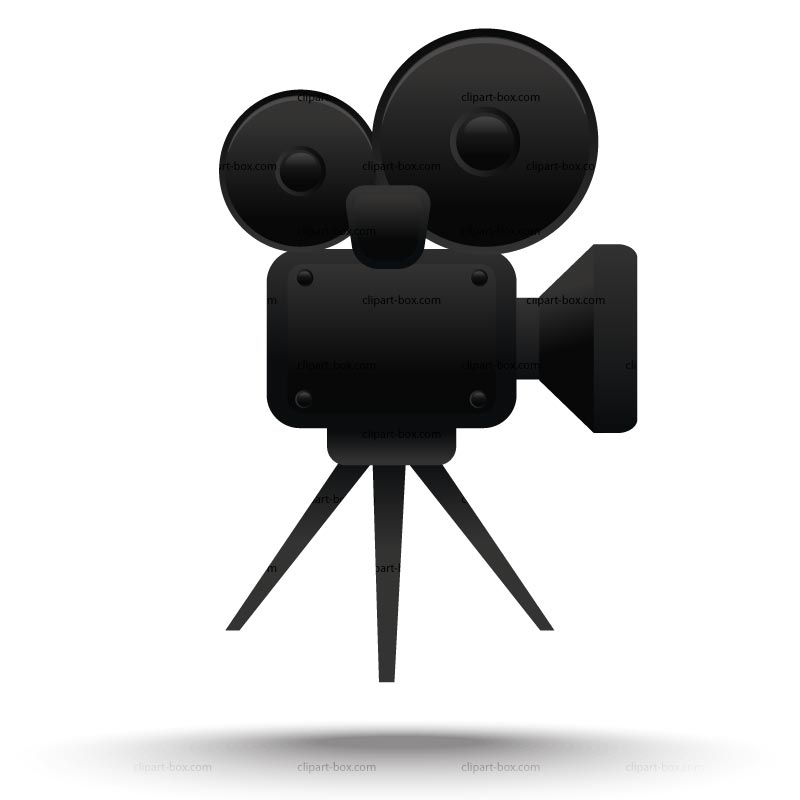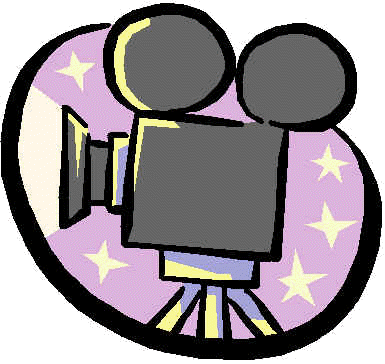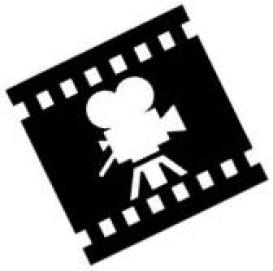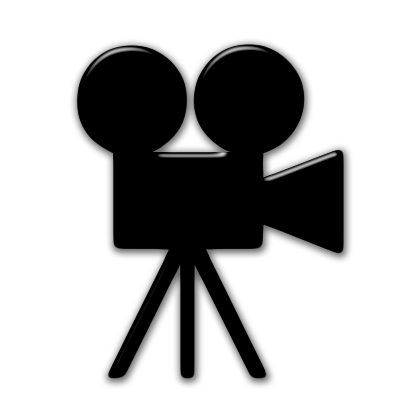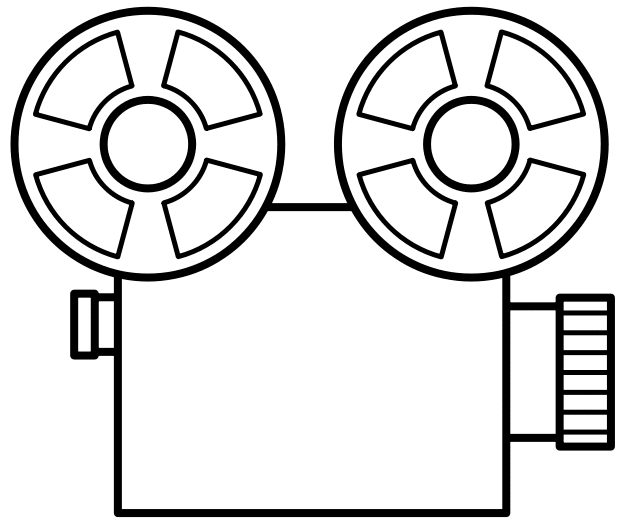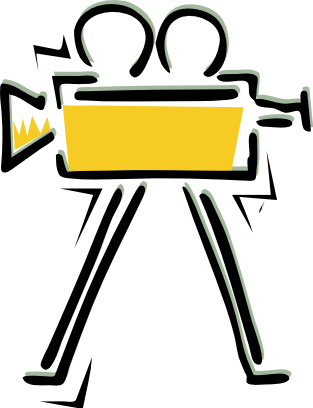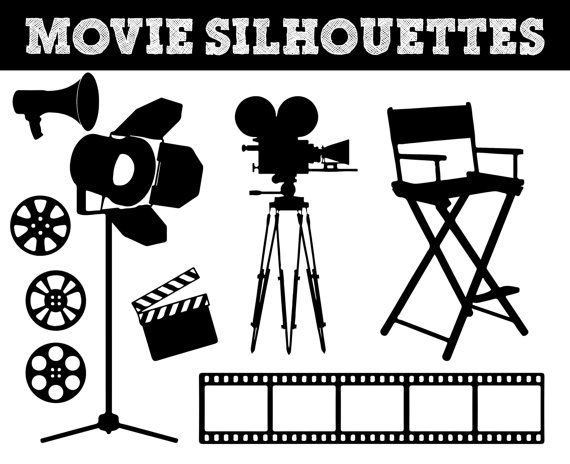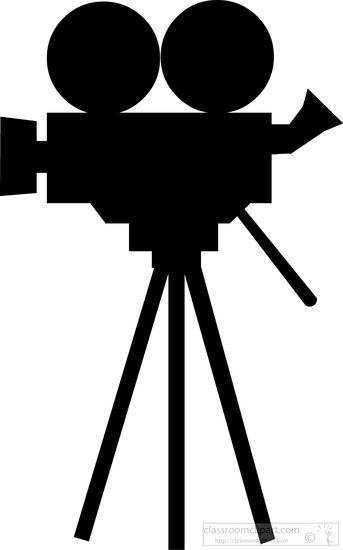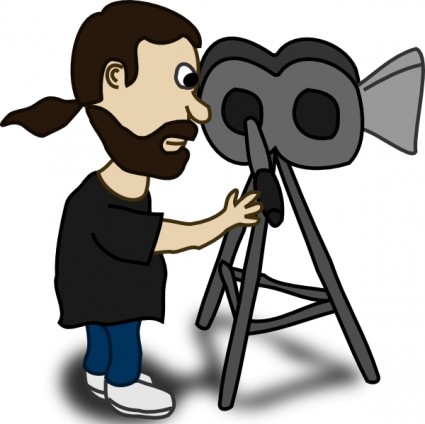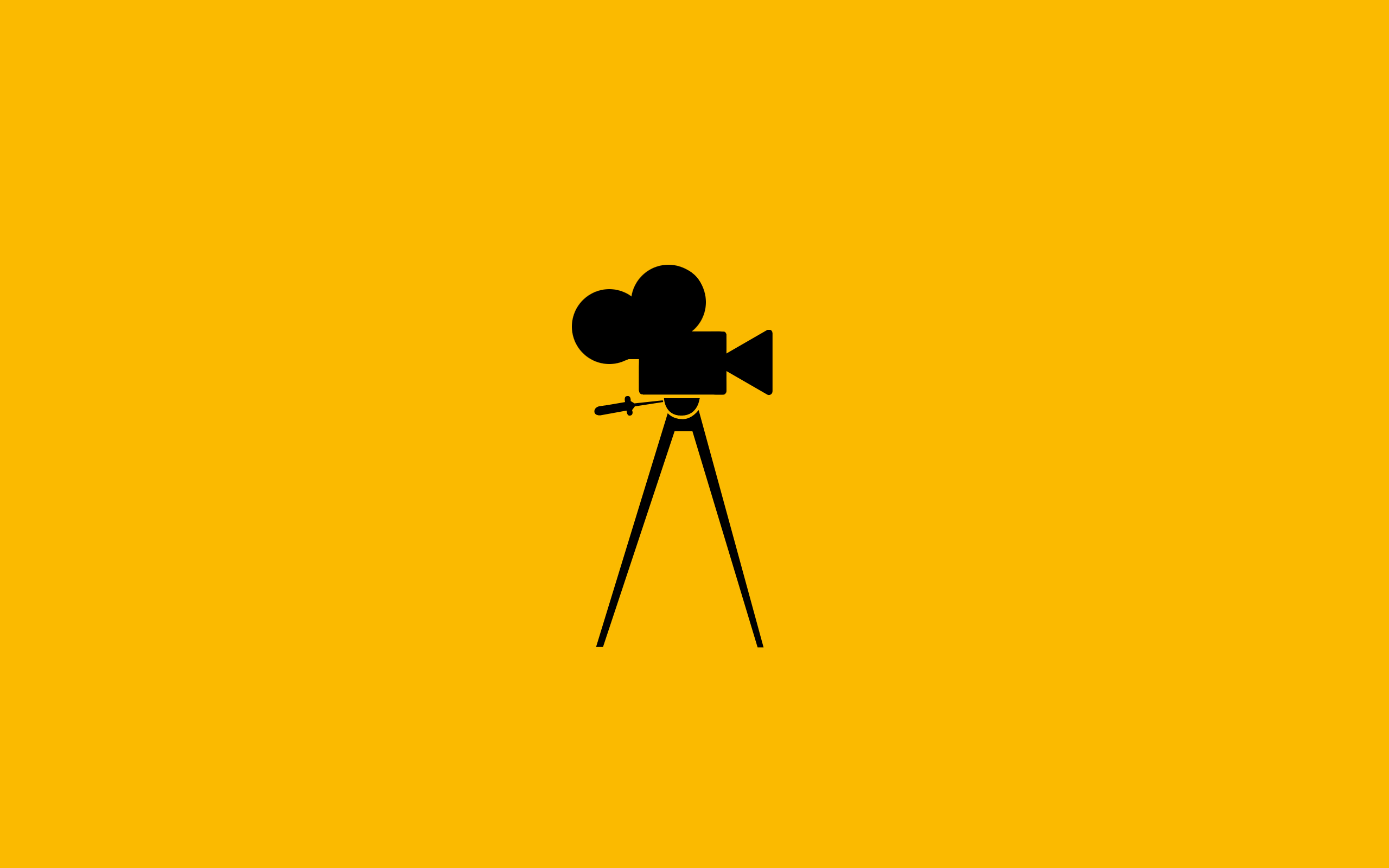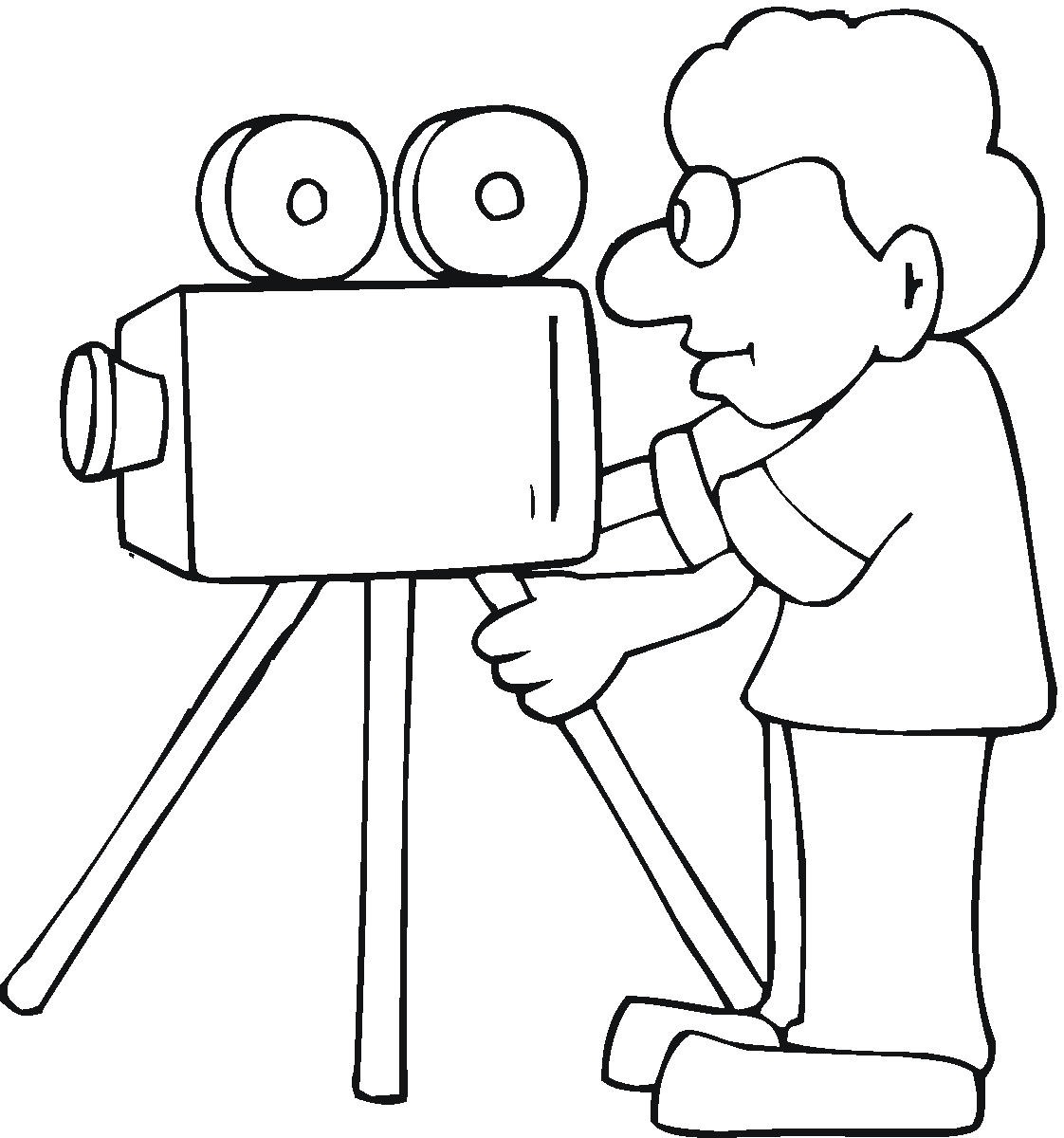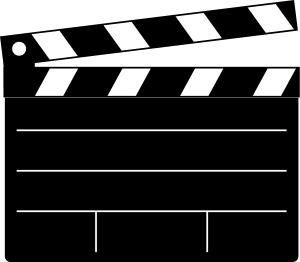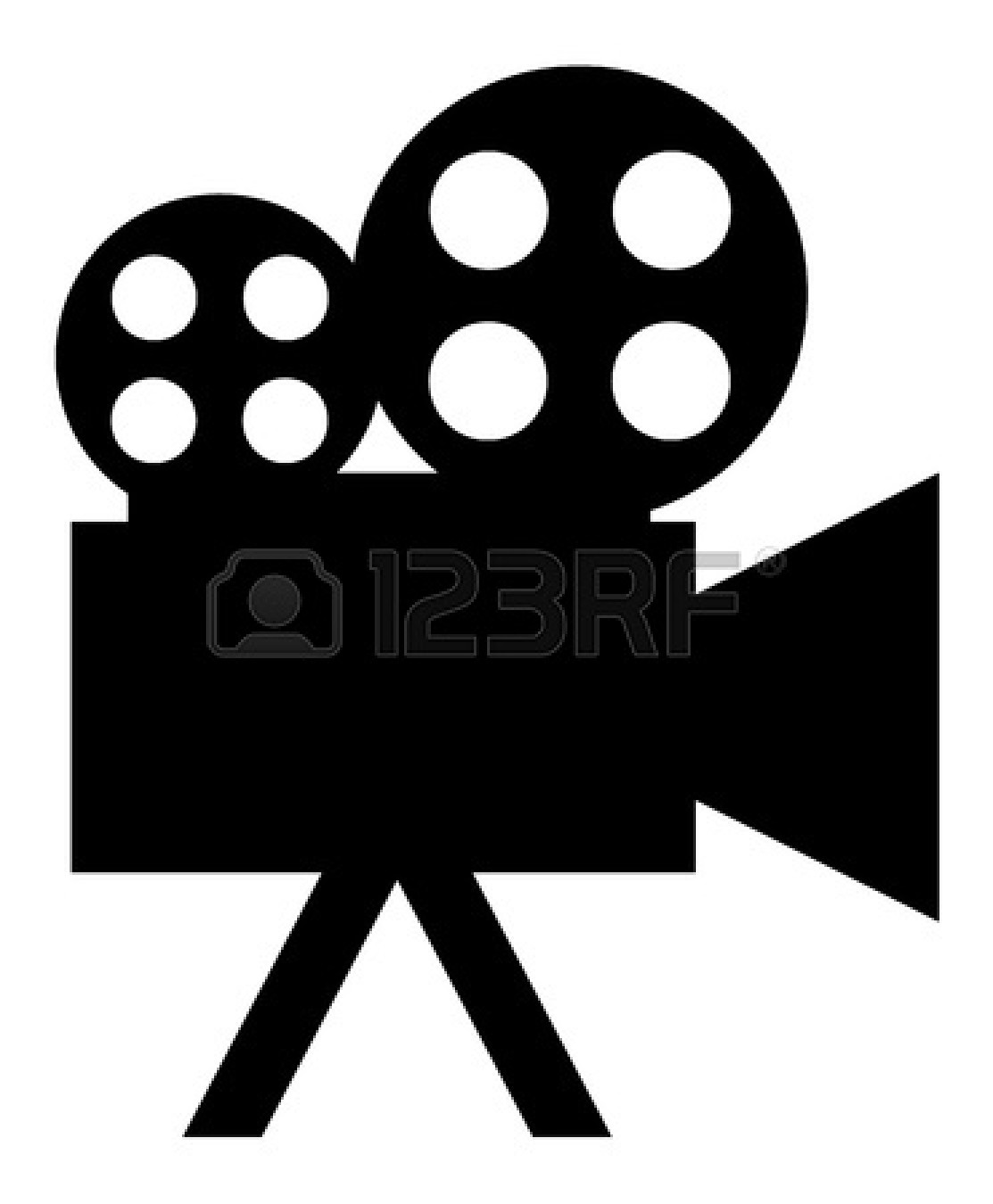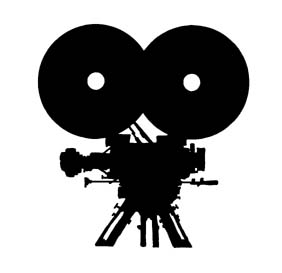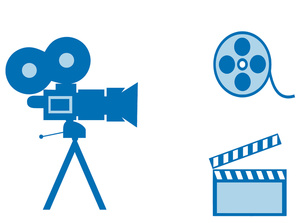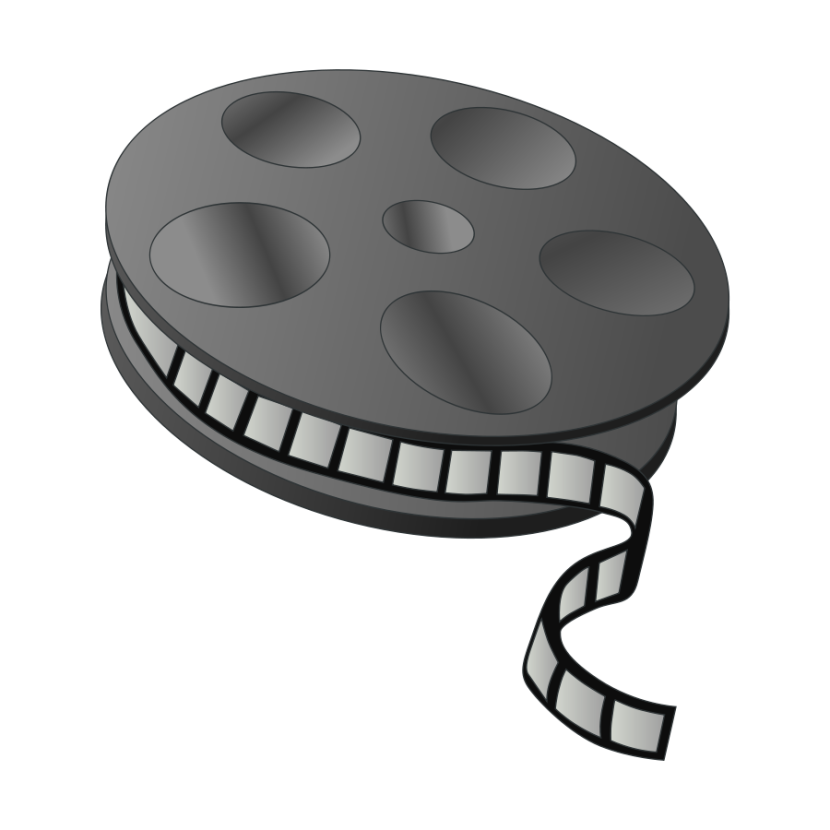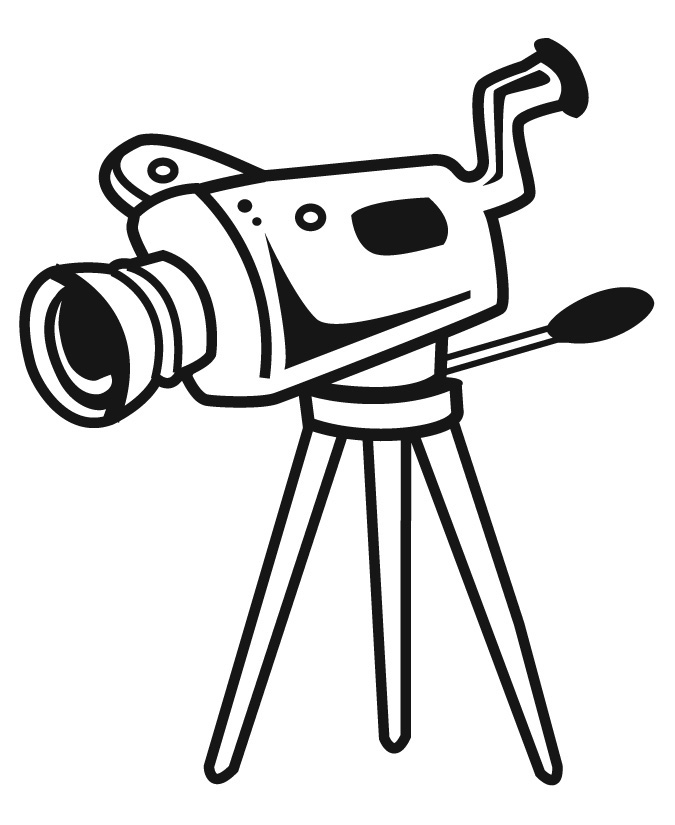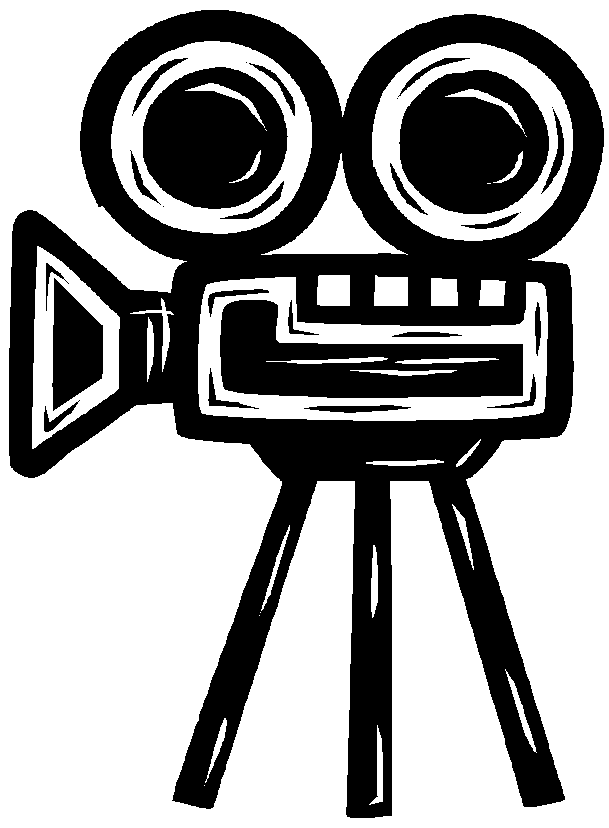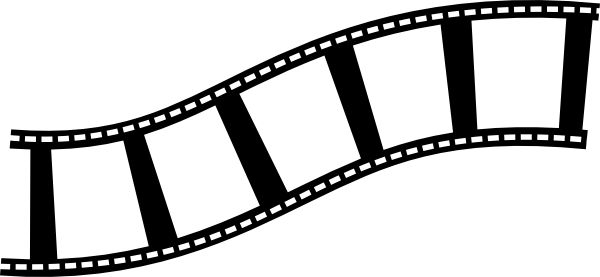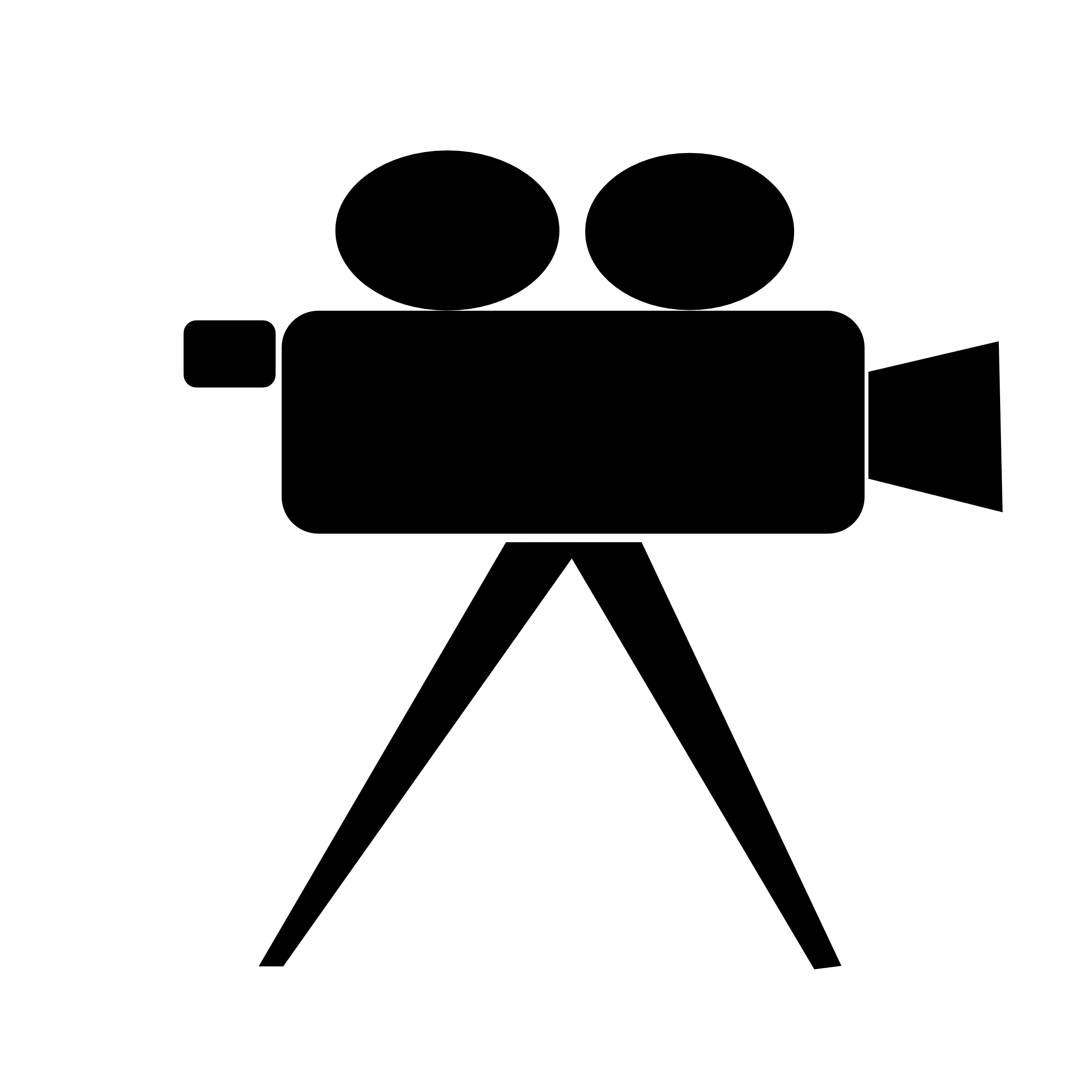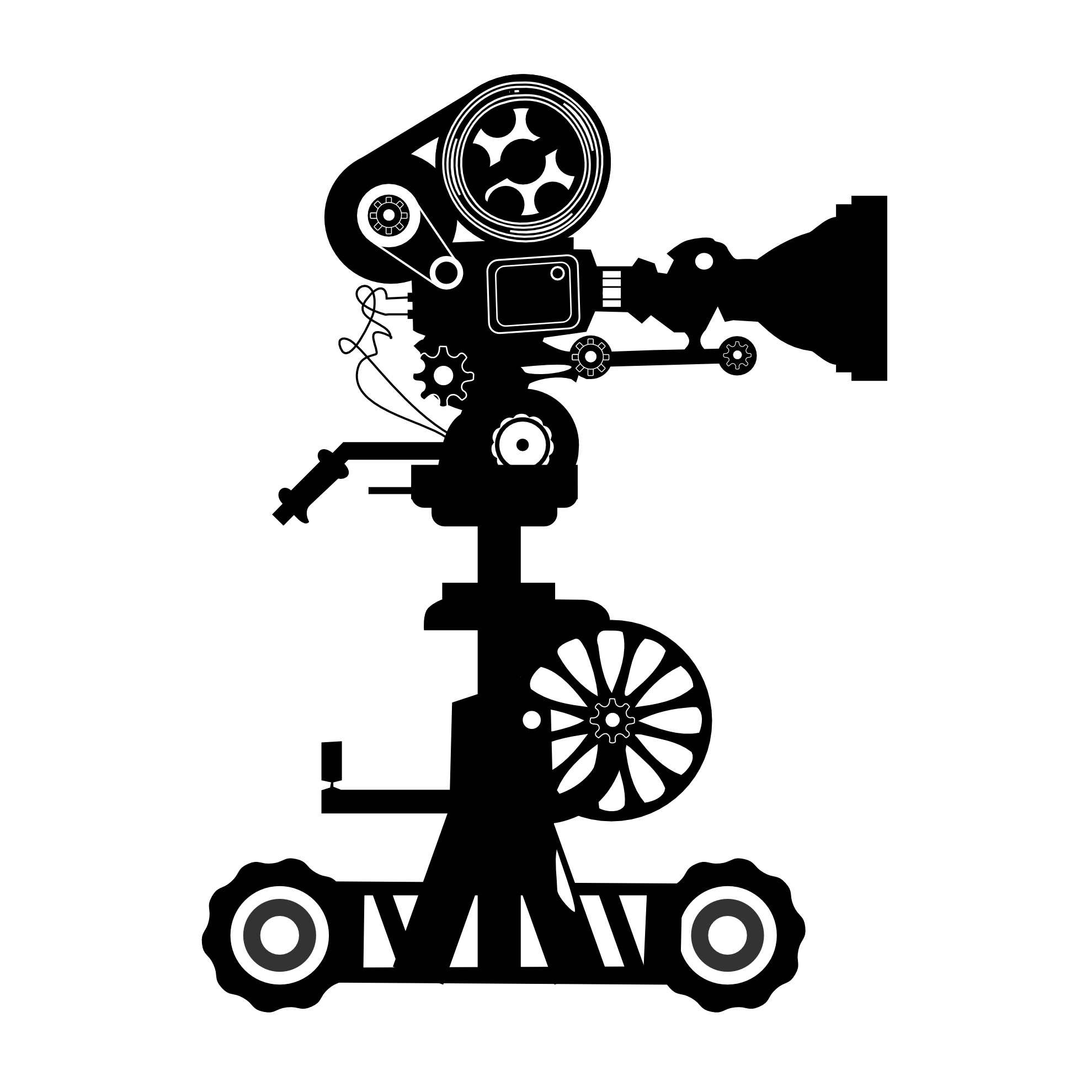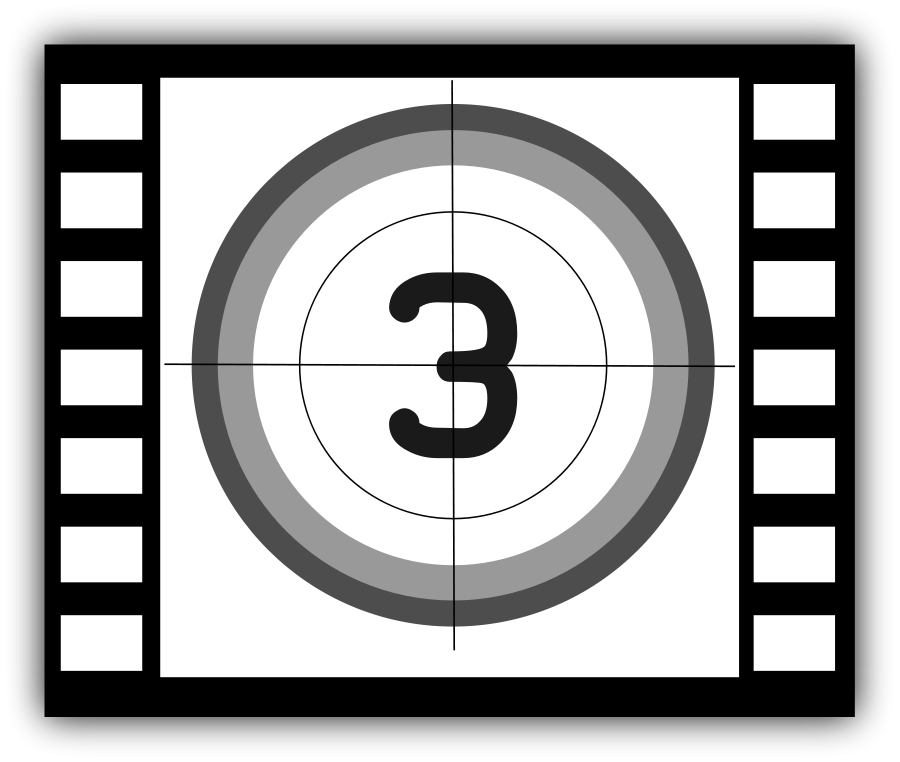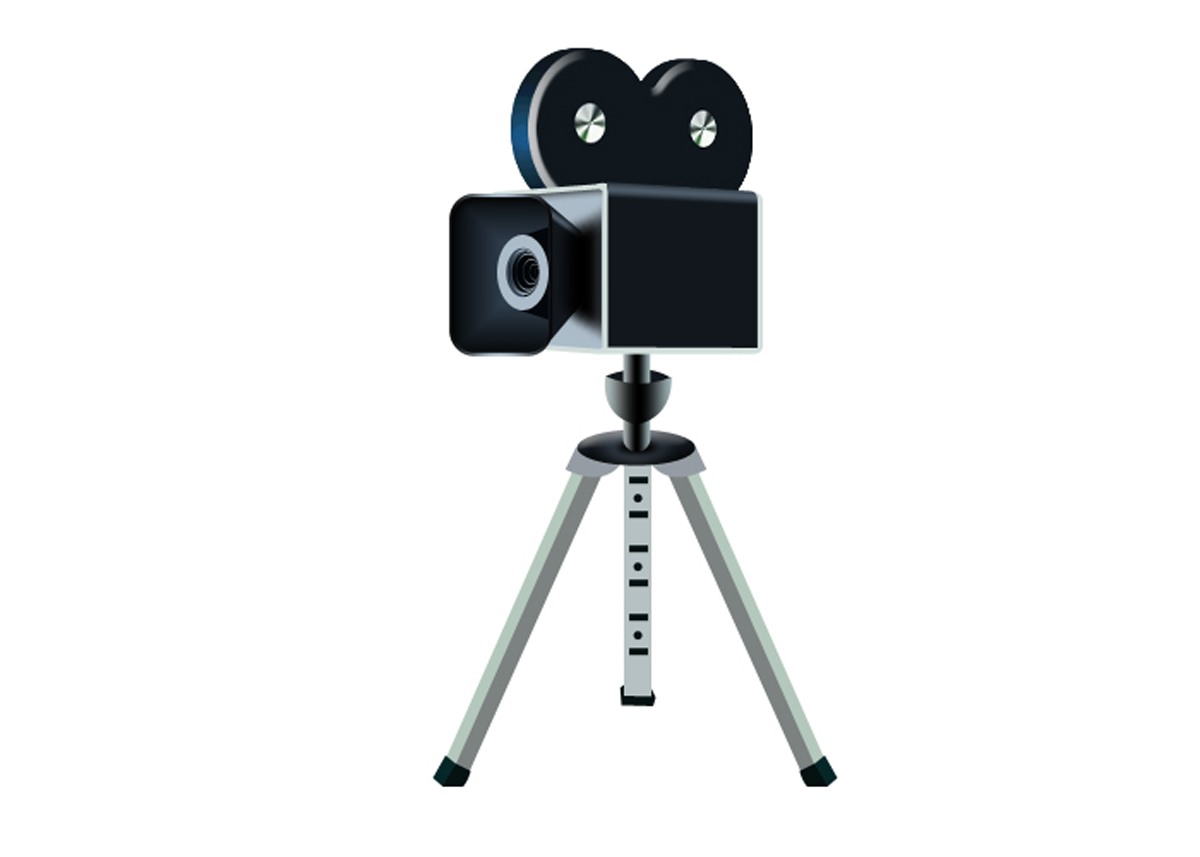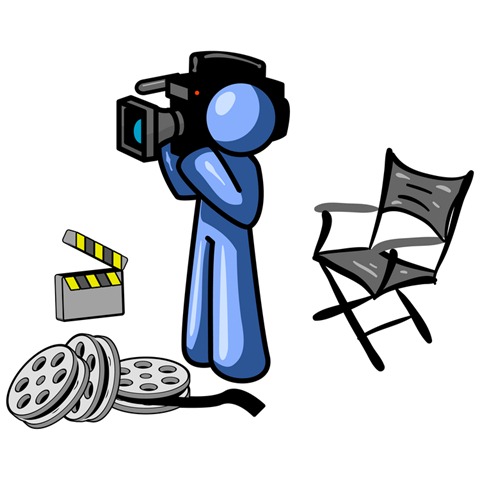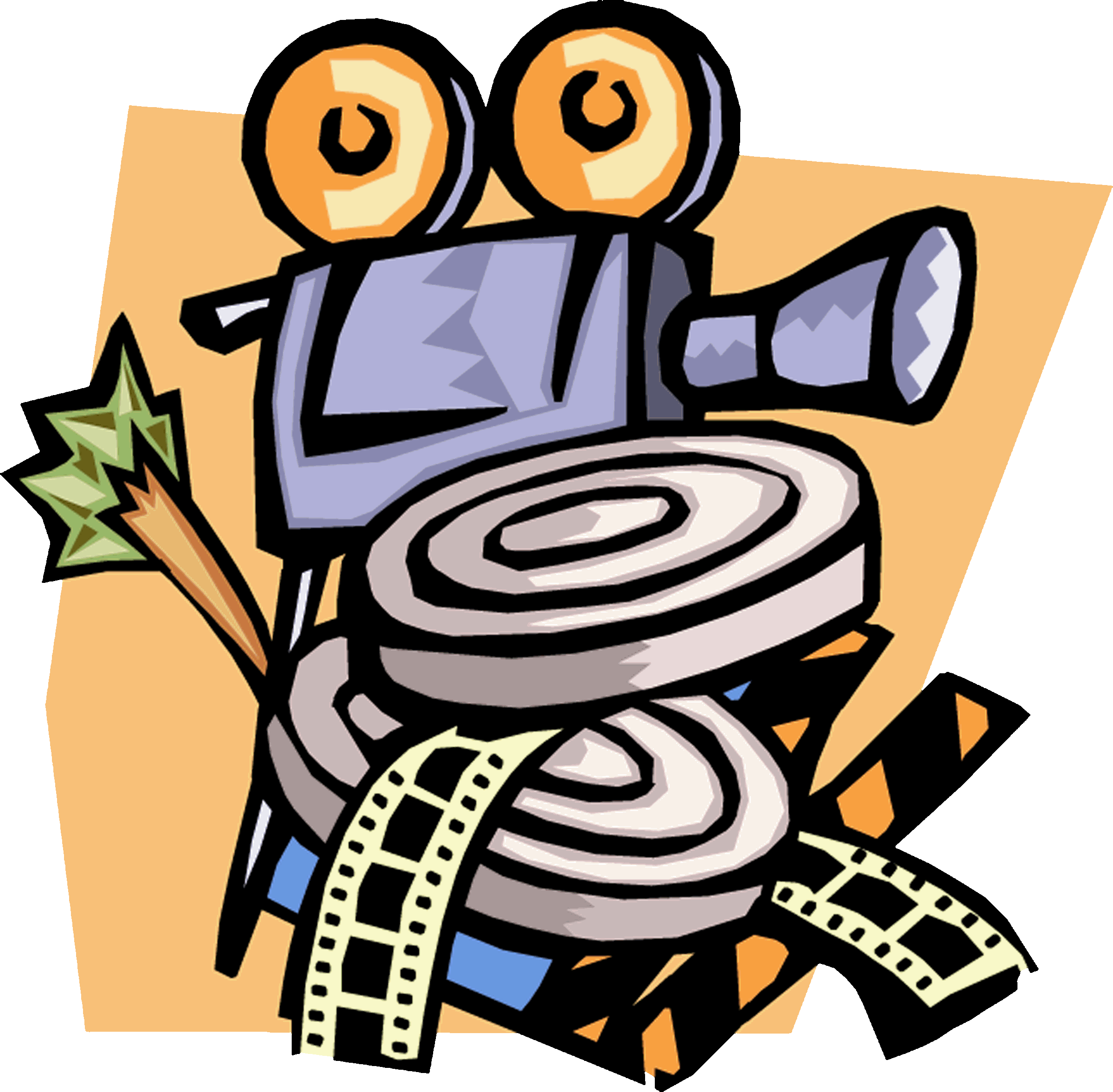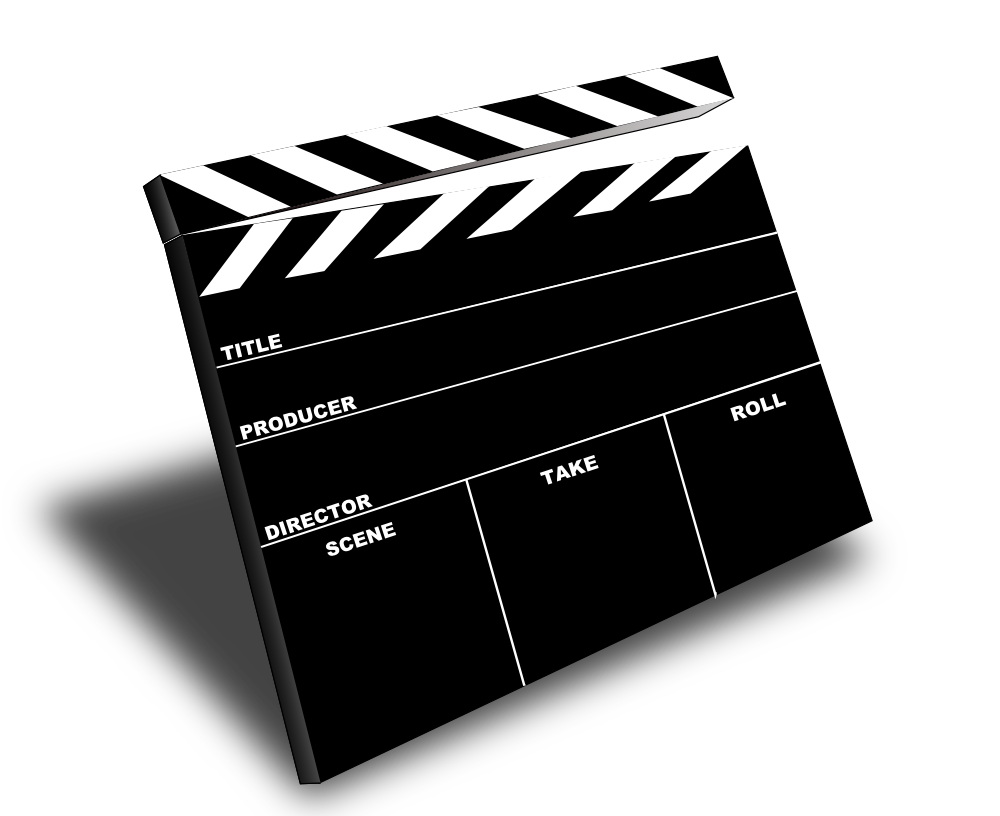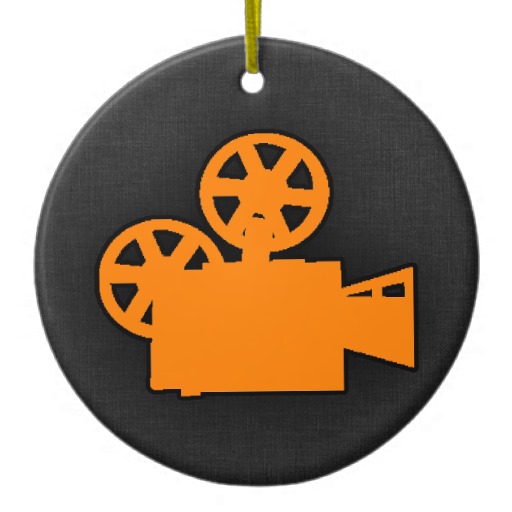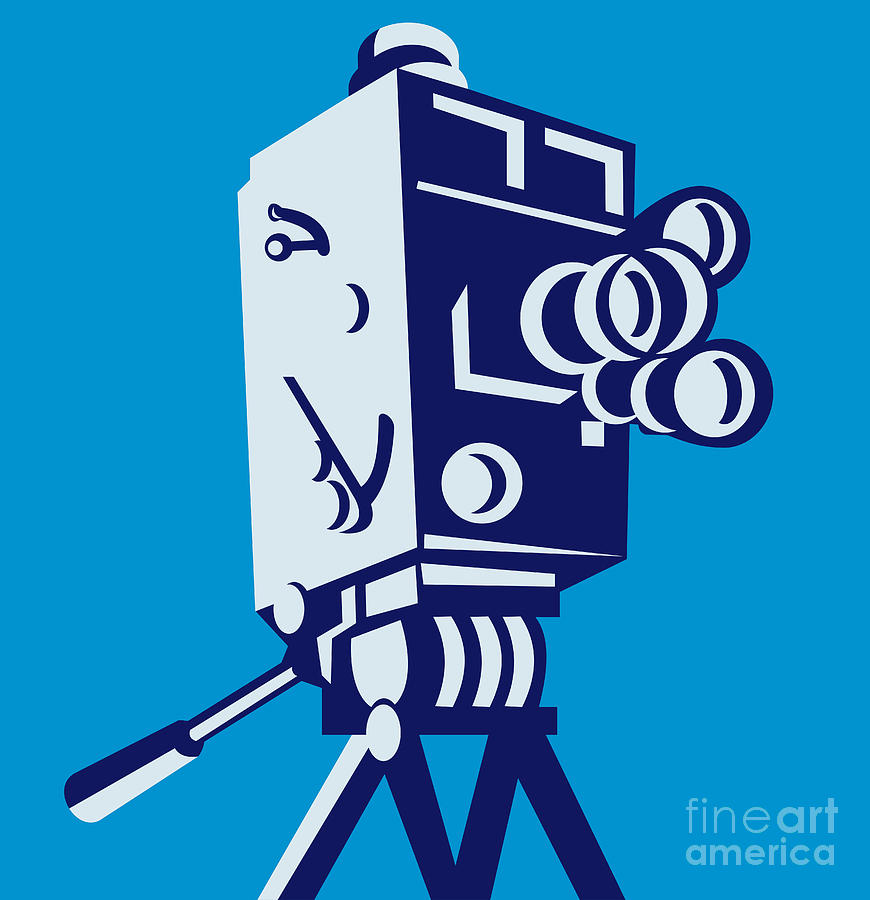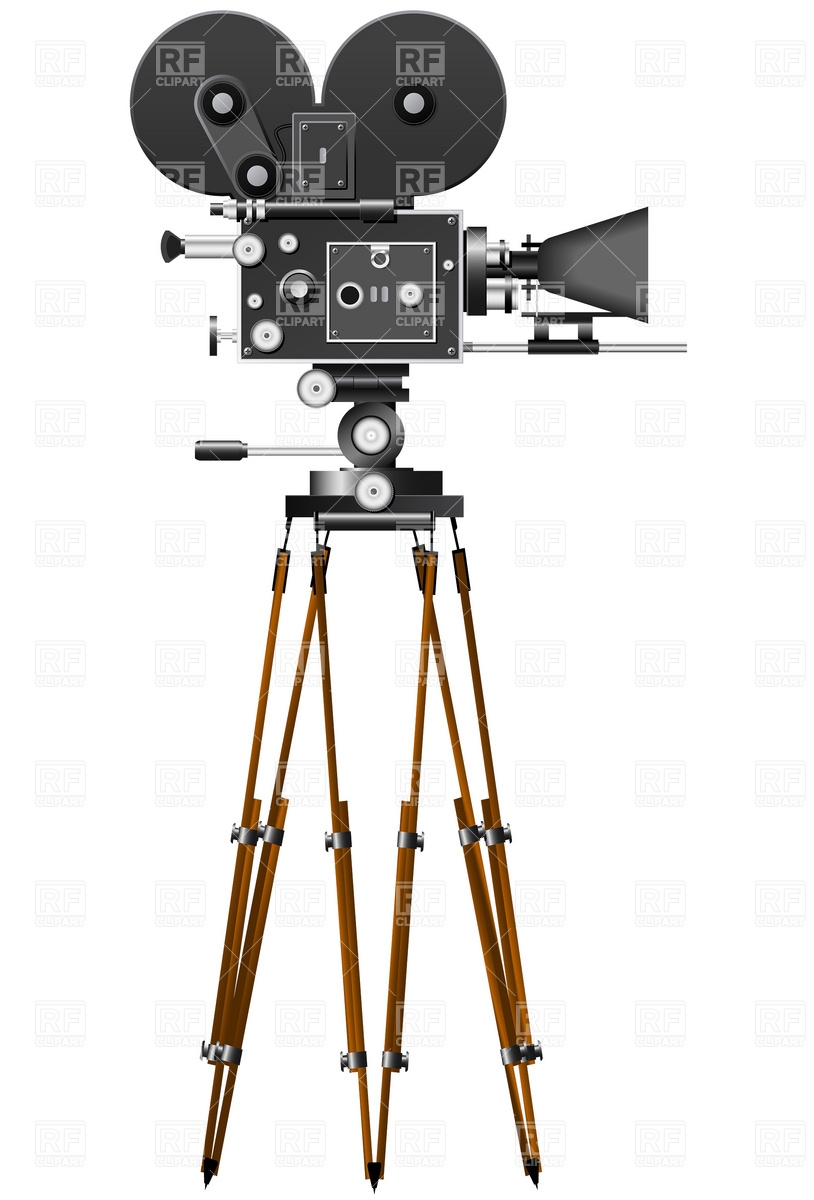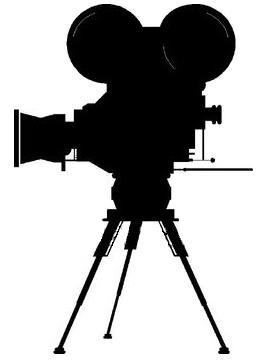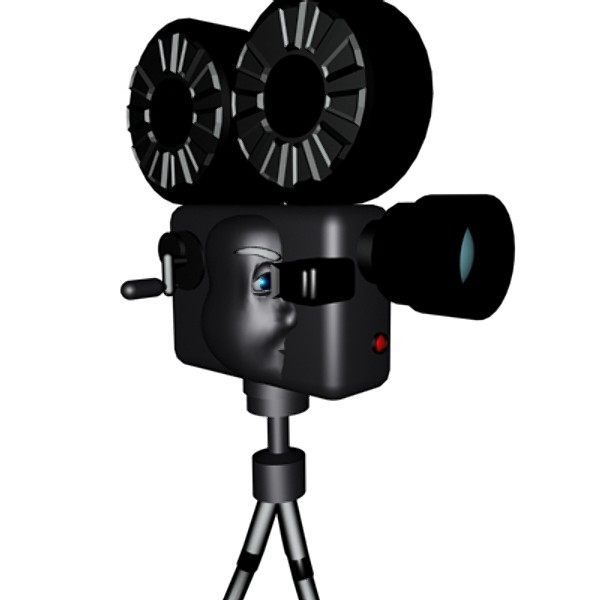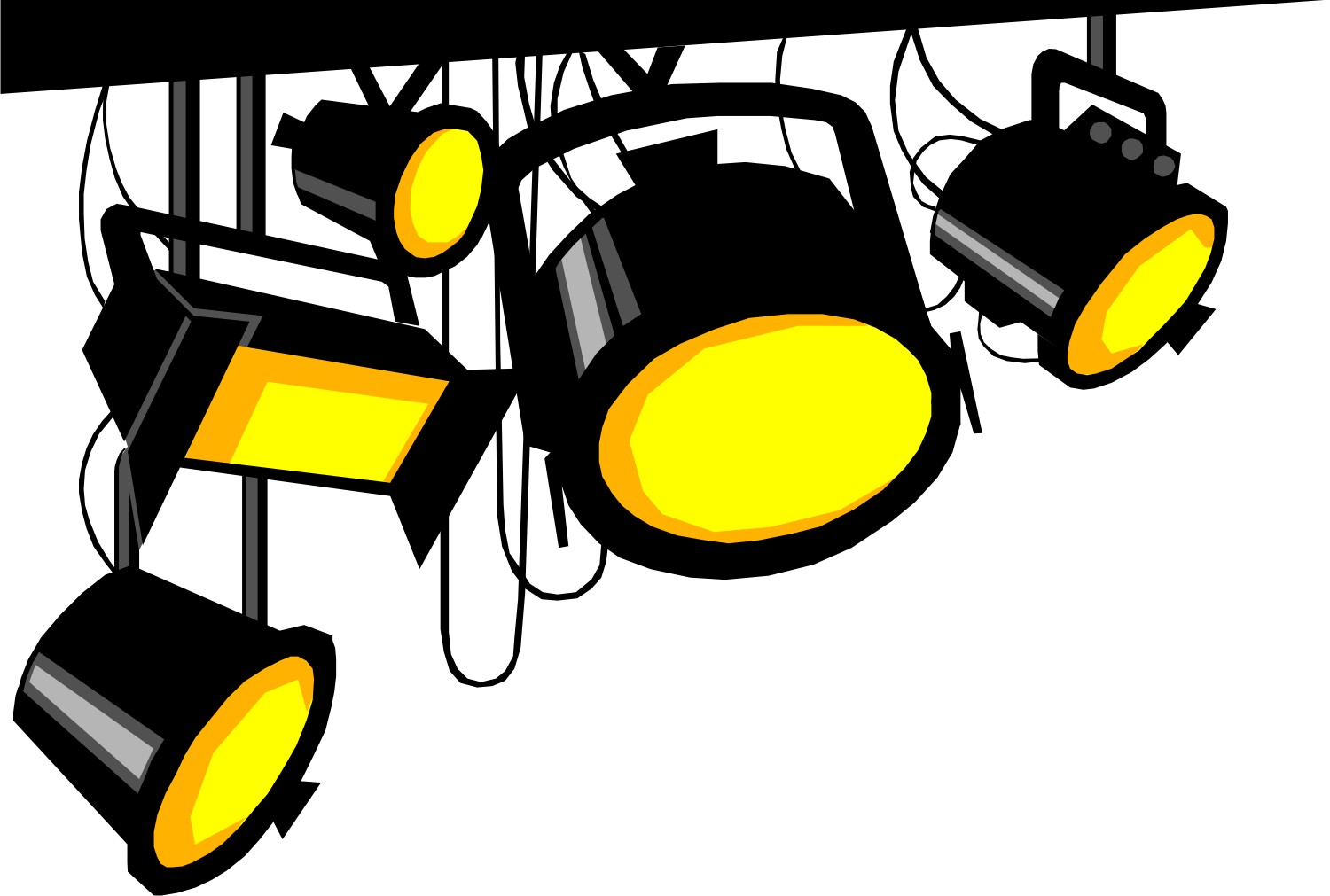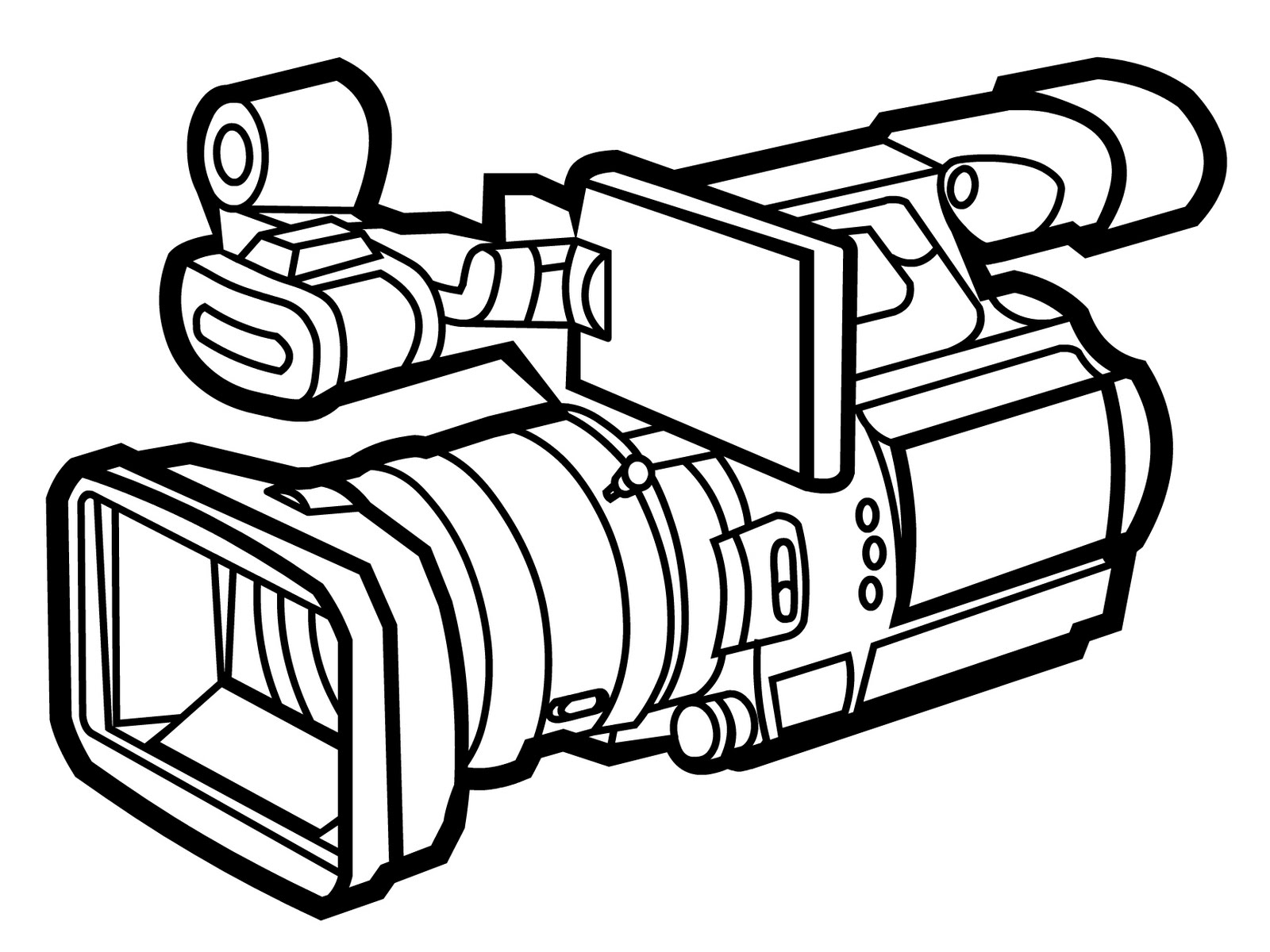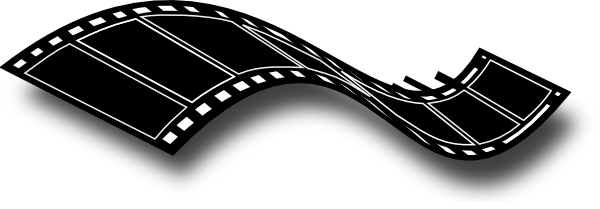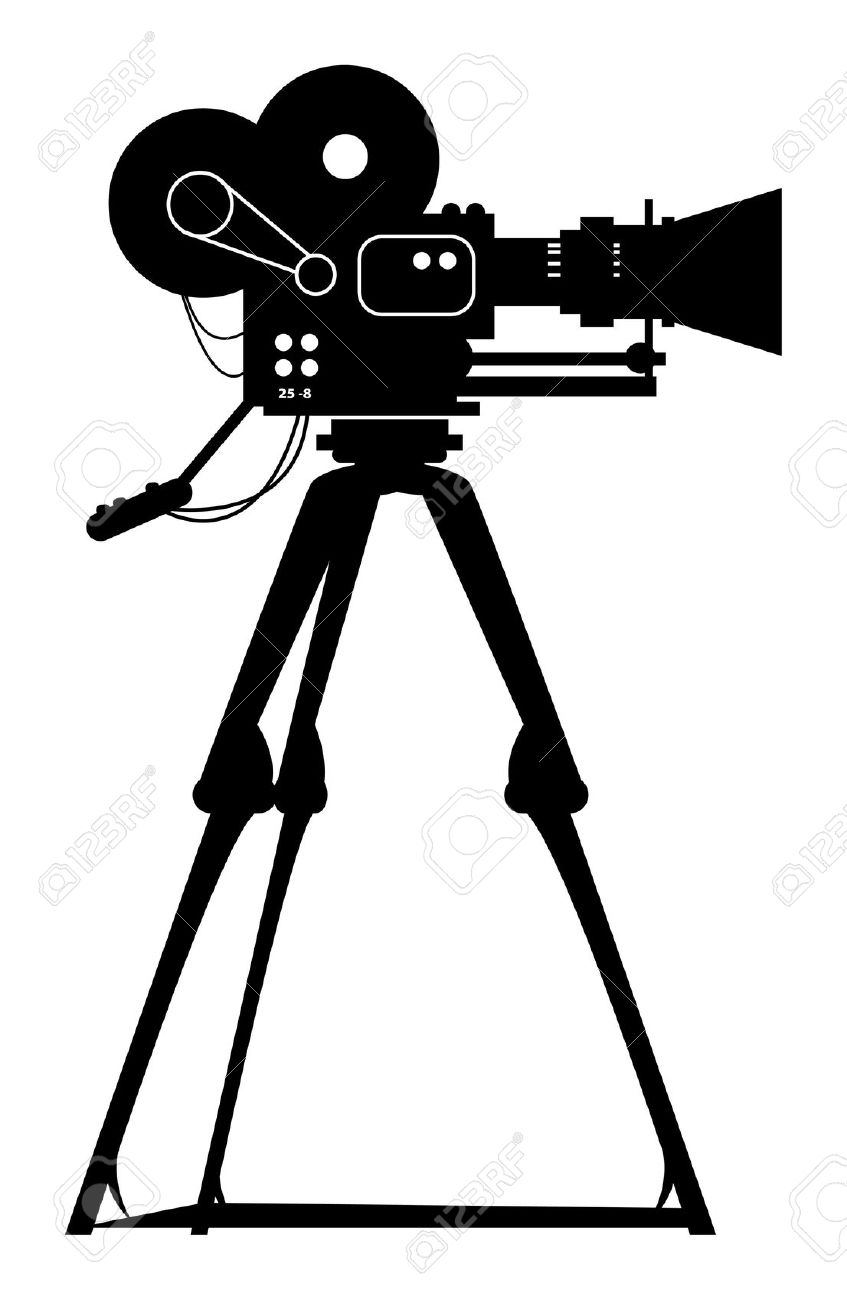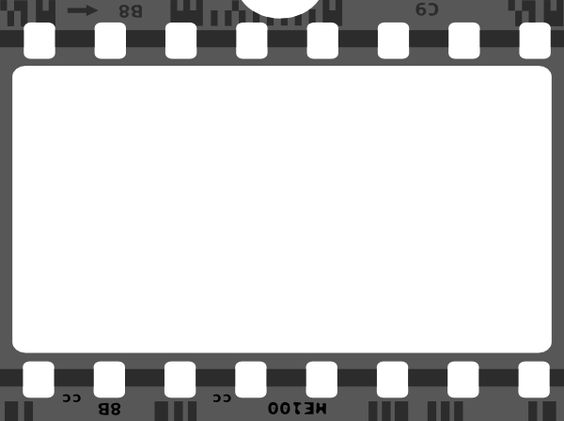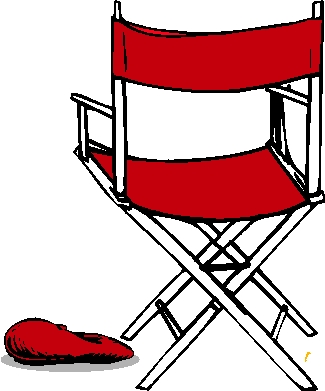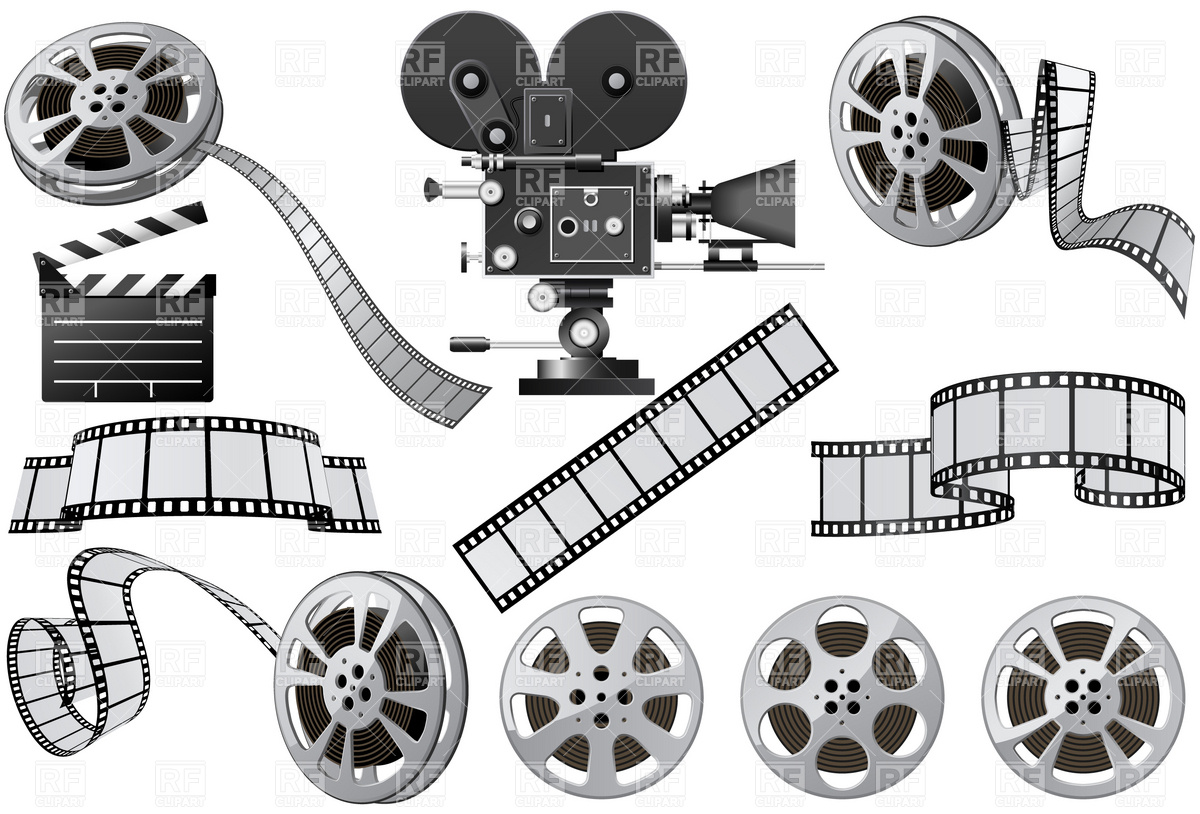Movie Camera Clip Art
Movie cameras originated when photographic innovators deployed newfangled devices capturing scenes of movement. Eadweard Muybridge arranged trip wire still cameras proving galloping horses briefly go airborne. Thomas Edison then debuted the motorized Kinetograph in 1891 recording images on perforated celluloid film strips viewed through early movie projector prototypes called Kinetoscopes. This evolved during cinema’s silent era peak with hand-cranked and motorized cameras requiring a separate cameraman role before integrated models like the Eyemo debuted in 1925 with enhanced mobility plus built-in motors standardizing film advancement. The game changed as sound recording introduced talkies, with new sound-syncing movie cameras like Mitchell’s noisy NC model used extensively through Hollywood’s Golden Age classics before lighter blimp boxes enabled quieter sets.
How Movie Cameras Work
Whether shooting analog film stock or digital media files, most motion picture cameras share common mechanisms like motorized film transport systems threading celluloid frames behind the lens gate at standard 24 fps speeds. Rotating mirror shutter mechanisms flash openings facilitating quick exposure times preventing image blurring while film gets tugged along frame-by-frame. Lenses made of arranged glass transmit and focus incoming light onto the gate while adjusting aperture diameters controls brightness and depth-of-field. Periodic clicks signify each photochemical or pixelated snapshot sequentially documenting motions into the illusion of continuity through rapid succession vision persistence phenomena in human eyes!
Different Types of Movie Cameras
From vintage hand-cranked contraptions to compact iPhone attachments, specialty movie cameras cater to all cinematographic needs:
- Film camera configurations range from vintage 16mm portables to bulky 65mm IMAX gear
- Digital models provide options like DSLR hybrids, 360 VR rigs or advanced Red cinema cameras
- Special effect cameras utilize innovations like ramping speeds, macro detailing or aerial drone mounting
Cinematography Techniques
Whether framing intimate interviews or epic war zone battlefields, cinematographer directors of photography (DOPs) wield fine-tuned movie camera approaches leveraging tactics like off-kilter Dutch angles conveying tension, slow panning revelation shots or frantic whip pans intensity. Shallow depth-of-field isolation aesthetics utilize selective focus drawing attention towards specific planes of action amidst artistically blurred backgrounds/foregrounds – intensifying emotions through lensing optics!
Iconic Movie Cameras
Certain cameras gain celebrity status for their utilization producing classics of cinema spanning back from Gordon Willis’ moody Godfather lighting to Gravity’s recent LED-illuminated shoots. Customized Panavision models Upgrade and Panaflex drove productions from Butch Cassidy to the Matrix franchise by the Wachowski siblings. While director presences looms, cameras imprint styles too like sticking steadicams conveying Scorsese grittiness or Andrea Arnold’s 4:3 Academy ratio intimacy squeezed through boxy formats.
Movie Cameras in Pop Culture
Hollywood loves self-referential homages to its own glamorous filmmaking mythos. Movies like Ed Wood dramatize behind-the-scenes shoots during Tinseltown’s emerging era using period cameras as props while prestige series like Feud appropriated antique arsenals. Classic noir films depict newsreel reporters with press cameras chasing scoops from Ace in the Hole to Superman’s Jimmy Olsen introduction. And animation gets “reel” through cameras dotting studio backlots or Roger Rabbit co-starring live-action lenses!
Vintage Camera Collectibles
Camera archivists and historians squirrel away antique equipment like the 19th century Zoetrope strips and rare ARGUS home movie cameras used by celebrity owners like Orson Welles or indie auteurs like John Waters to shoot early underground features. Photographic nostalgia fuels collectors seeking rarities like custom Panavision or Mitchell rigs employed during Hollywood golden years, or futurist models like the soundtrack-synching VITASCOPE cameras which ushered in talkies through technical turning points!
Clipart Depictions
Movie camera graphics isolate retro lenses upon solid minimalist backgrounds for sharp vector contrast popping their mechanical outlines. Stylized directors peer into viewfinders to line up imaginary shots or yell “action” through vintage megaphones resembling models from Hollywood’s 1920’s transition out of silent cinema! Pop art interpretations posterize celluloid film strips covered in colorful filters or star-shaped apertures as accessibility shortcuts into complex optics physics fundamentals powering photographic illusion magic.
Modern Digital Cinematography
Emerging video recording methods rapidly overtook traditional celluloid film processes allowing crisp 4K+ HD recording, portable setups across devices and efficient nonlinear editing workflows. New cameras like Arri Alexa models shoot digital files natively now while leveraging smartphones and gimbals opens creative possibilities capturing footage cheaper and quicker than ever!
Cinematic Storytelling Power
Whether portraying fantasies on Babylon sets or Italian neorealist poverty, cameras channel directors’ artistic visions immortalizing emotional storytelling for decades through flickering frames sequenced into subtle gestures, dramatic zooms and metaphoric transitions advancing layered narratives up on screens…big and small! New virtual reality 360 camera rigs further immerse participating audiences inside unfolding plots granting them interpretive viewpoints unthinkable during past eras of cinema history as technological platforms shape shifting creative frontiers.
In this page clipartix present 72 movie camera clipart images free for designing activities. Lets download Movie Camera Clip Art that you want to use for works or personal uses.
